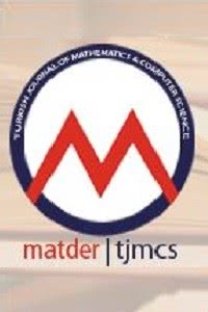An Improved Genetic Algorithm Crossover Operator for Traveling Salesman Problem
An Improved Genetic Algorithm Crossover Operator for Traveling Salesman Problem
___
- [1] Ahmed, Z.H., Genetic algorithm for the traveling salesman problem using sequential constructive crossover operator, Int J Biom Bioinformatics. 3(2010), 96–105.
- [2] Bhide, S., John, N., Kabuka, M.R., A Boolean neural network approach for the traveling salesman problem, IEEE T COMPUT., 42(1993), 1271–1278.
- [3] Bland, R.G., Shallcross, D.F., Large traveling salesmen problems arising from experiments in x-ray crystallography, Oper. Res. Lett., 8(1988), 125–128.
- [4] Bolanos, R.I., Eliana, M.T.O., and Mauricio, G.E., . A population-based algorithm for the multi traveling salesman problem, International Journal of Industrial Engineering Computations, 7(2016), 245–256.
- [5] Davis, L., Applying Adaptive Algorithms to Epistatic Domains, In: Proceedings of the International Joint Conference on Artificial Intelligence, 1985, 162–164.
- [6] Deep, K., Adane, H.M., New variations of order crossover for traveling salesman problem International Journal of Combinatorial Optimization Problems and Informatics, 2(2011), 2–13.
- [7] Dorigo, M., Gambardella, L.M., Ant colony system: a cooperative learning approach to the traveling salesman problem, IEEE T EVOLUT COMPUT., 1(1997), 53–66.
- [8] Dorigo, M., Maniezzo, V., Colorni, A., Ant system: optimization by a colony of cooperating agents, IEEE Transactions on Systems, Man, and Cybernetics, Part B (Cybernetics), 26(1996), 29–41.
- [9] Finke, G., Claus, A., Gunn, E.,A two-commodity network flow approach to the traveling salesman problem, Congressus Numerantium, 41(1984), 167–178.
- [10] Gen M, Cheng R. Genetic algorithms and Engineering design. John Wiley and Sons, London, UK. 1997.
- [11] Ghadle, K.P., and Muley, Y.M., Traveling salesman problem with MATLAB programming, International Journal of Advances in Applied Mathematics and Mechanics, 2(2015), 258–266.
- [12] Glover, F., Artificial intelligence, heuristic frameworks and tabu search, Managerial and Decision Economics, 11(1990):365–375.
- [13] Goldberg, D.E., Genetic algorithms in search, optimization, and machine learning. Addison-Wesley Publishing Company, 1989.
- [14] Goldberg, D.E., Lingle, R., Alleles, loci, and the traveling salesman problem, In: Proceedings of the 1st International Conference on Genetic Algorithms and Their Applications. Hillsdale, New Jersey: Lawrence Erlbaum, 1985, 154–159.
- [15] Holland, J.H., Adaptation in natural and artificial systems: an introductory analysis with applications to biology, control, and artificial intelligence. University of Michigan Press, Oxford, UK, 1975.
- [16] Hussain, A., Muhammad, Y.S., Sajid M.N., Hussain, I., Shoukry A.M., Gani, S., Genetic Algorithm for Traveling Salesman Problem with Modified Cycle Crossover Operator, COMPUT INTEL NEUROSC., 2017(2017), 1–7.
- [17] Kennedy, J., Eberhart, R.C., and Shi, Y., Swarm intelligence, morgan kaufmann publishers. Inc., San Francisco, CA, 2001.
- [18] Kirkpatrick, S. and Toulouse, G., Configuration space analysis of traveling salesman problems, Journal de Physique, 46(1985), 1277–1292.
- [19] Kumar, N., Karambir, R.K., A comparative analysis of PMX, CX and OX crossover operators for solving traveling salesman problem, International journal of Latest Research in science and technology, 1(2012), 98–101.
- [20] Larranaga, P., Kuijpers, C.M., Murga, R.H., Inza, I., Dizdarevic, S., Genetic algorithms for the traveling salesman problem: A review of representations and operators, ARTIF INTELL REV, 13(1999), 129–170.
- [21] Lin, S., Kernighan, B.W., An effective heuristic algorithm for the traveling salesman problem, OPER RES, 21(1973), 498–516.
- [22] Michalewicz, Z., Genetic Algorithms+ Data Structures= Evolution Programs. Springer, 3rd edition, 1996. 1
- [23] Miliotis, P., Using cutting planes to solve the symmetric traveling salesman problem, MATH PROGRAM, 15(1978), 177–188.
- [24] Moon, C., Kim, J., Choi, G., Seo, Y., An efficient genetic algorithm for the traveling salesman problem with precedence constraints, EUR J OPER RES., 140(2002), 606–617.
- [25] Nagata, Y., Soler, D., A new genetic algorithm for the asymmetric traveling salesman problem, EXPERT SYST APPL., 39(2012), 8947–8953.
- [26] Oliver, I.M., Smith, D., Holland, J.R., Study of permutation crossover operators on the traveling salesman problem, In: Grefenstette, J. J. (ed.) Genetic Algorithms and Their Applications, Proceedings of the Second International Conference. Hillsdale, New Jersey: Lawrence Erlbaum, 1987, 224–230.
- [27] PiwoAska, A. Genetic algorithm finds routes in traveling salesman problem with profits, Zeszyty Naukowe Politechniki BiaAostockiej. Informatyka, (2010), 51–65.
- [28] Potvin, J.Y., Genetic algorithms for the traveling salesman problem, ANN OPER RES., 63(1996), 337–370.
- [29] Ravikumar, C.P., Parallel techniques for solving large scale traveling salesperson problems, Microprocessors and Microsystems, 16(1992), 149–158.
- [30] Reinelt G. TSPLIB http://www. iwr. uni-heidelberg. de/groups/comopt/software. TSPLIB95. 2014.
- ISSN: 2148-1830
- Yayın Aralığı: 2
- Başlangıç: 2013
- Yayıncı: MATEMATİKÇİLER DERNEĞİ
Differential Equations for a Space Curve According to The Unit Darboux Vector
Muhammad Saiful Islam MALLİK, Mohammad Azizul HOQUE, Ashraf UDDİN
An Examination Perpendicular Transversal Intersection of IFRS and MFRS in E3
Seyda KILIÇOGLU, SÜLEYMAN ŞENYURT
Bünyamin ŞAHİN, ABDULGANİ ŞAHİN
Binary States Cellular Automata with Reflexive and Periodic Boundaries and Image problem
Some Results on the Ideals of Real-Valued Lower Triangular Toeplitz Matrices
Hamide Dogan, Kachmar A. Khalil, Luis R. Suarez
On Domination Polynomials of Caterpillar Graphs
Abdulgani Şahin, Bünyamin Şahin
Muhammad Saiful Islam Mallik, Mohammad Azizul Hoque, Ashraf Uddin
